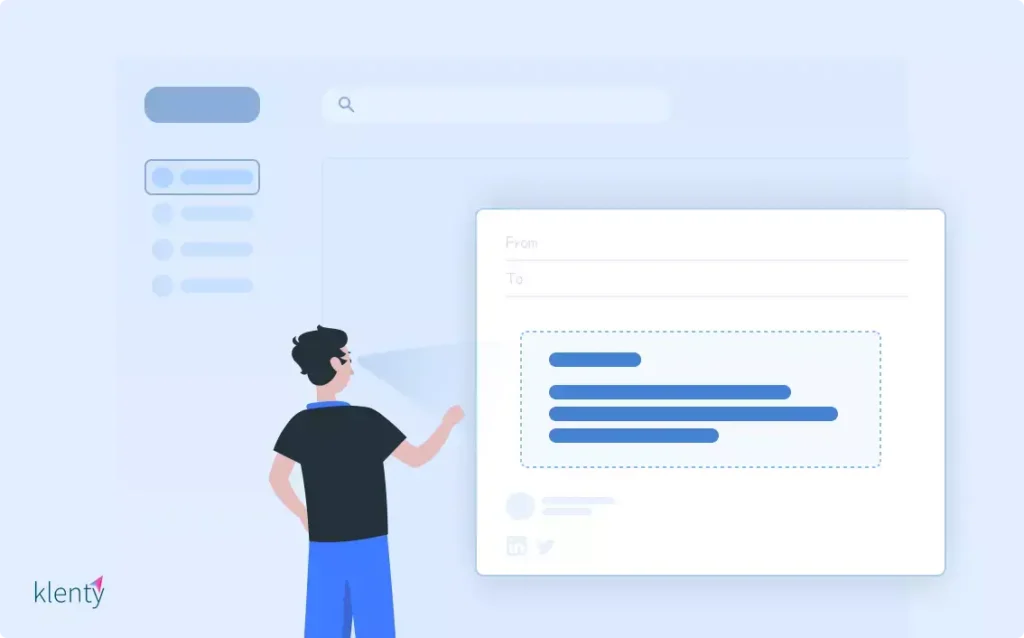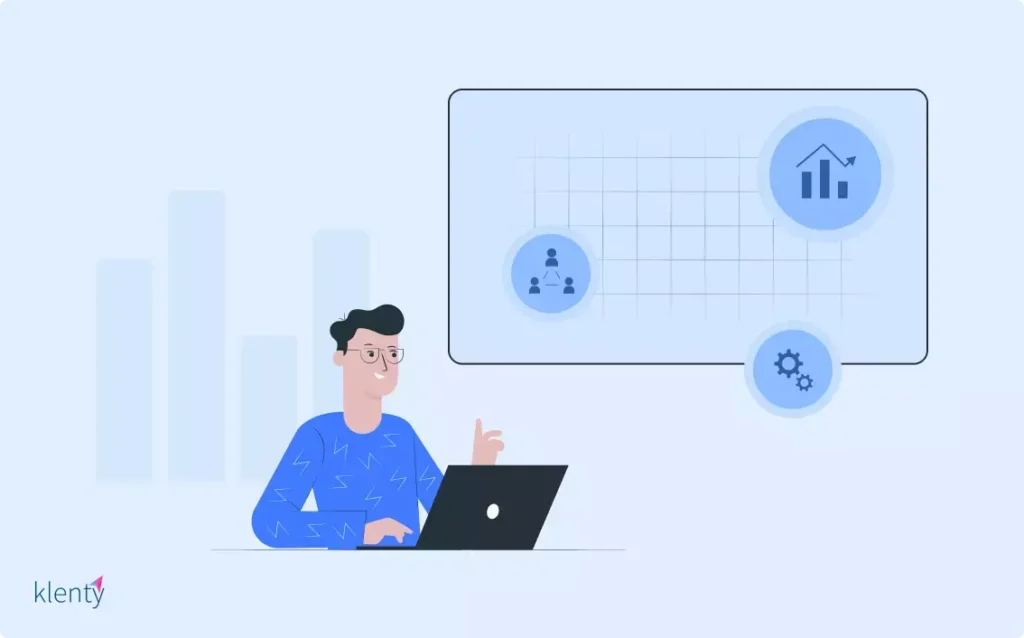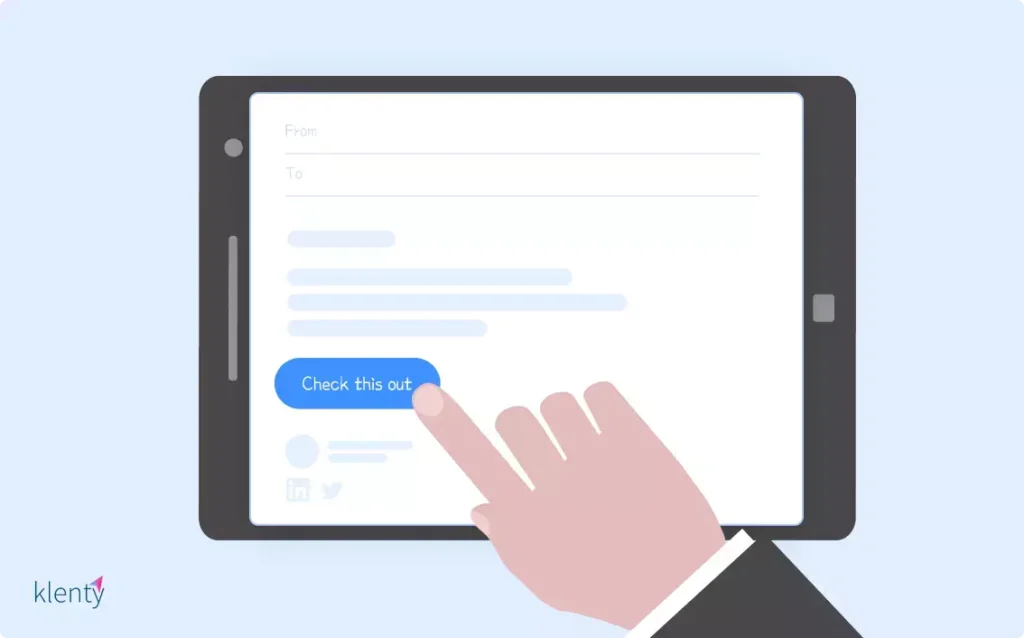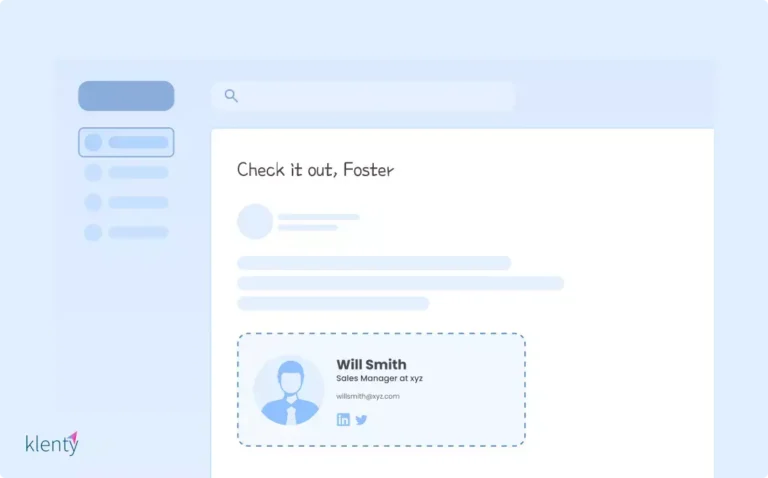Between meetings, lunch breaks, deep-focus work, and water cooler conversations, nobody today has the luxury of reading long emails–or emails with many many paragraphs and fat sentences. We rarely have enough time to skim through the little text on phones or websites.
According to the art of skimming, we read the headlines, subheadings, bullet points, any bolded words in between, and anything that looks out of the ordinary.
That means big chunks of text anywhere remain unread just like the terms and conditions of every product/website. Your cold emails, too, could meet a similar fate if you don’t update the format to fit people’s reading patterns today. It should be short, bulleted, neatly formatted with enough breaks, and shouldn’t look like the preface to a book.
So, what should your cold email length be? We answer below.
What Should the Ideal Length of a Cold Email Be?
The ideal length of a cold email should range between 50-125 words according to multiple sources. That’s about 5-15 lines of text in an email in your cold email outreach.
- Response rates to emails that were 75-100 words long were a whopping 51%, a study by Boomerang which surveyed up to 40 million emails reported.
- Another study conducted by email software, Constant Contact, revealed that there was a 16% click-through rate for emails that had approximately 20 lines of text.
Therefore, we recommend that cold emails should be 5-15 lines of text or 50-150 words.
That is succinct, scannable, and strong enough to capture the 8-second attention span of readers today. You can test out longer lengths of up to 15 lines in your follow-up emails.
As long as it includes credible information and a clear and valuable pitch that is relevant to the reader, it is enough. Long and winding emails will get buried in the sea of emails people receive every day.

How Many Lines Should a Prospecting Email Include?
A prospecting email should be 5-15 lines long or up to 150 words. Since people’s attention span is the most valuable currency in the world right now and considering everyone (literally) is vying for their attention, you have to make your emails shorter and the copy more effective.
Pro Tip: A/B tests different cold email subject line lengths, email body copy, and CTA, and optimizes for better open rates and higher response rates.
Why Short Cold Emails?
In B2B sales, a good cold email is what stands between you and a deal. That means a lot is riding on the ‘good’ aspect of your email. Essentially, what makes a cold email good is how well it values the prospect’s time. One way to write an effective cold email is to keep it short.
Here’s why ‘short’ is good:
- It’s easier to read. When there is a mountain of text we have to go through, we tend to put it off unless it was sent by our boss or it was a book. If it’s short and easier to read, prospects can give your email a quick scan and make a decision to reply or ignore it within seconds. Clear call-to-actions that end these emails also unburden the reader of the decision-making process.
- It specifically targets today’s email readers. It’s common knowledge that the attention span is dwindling to a couple of seconds. That’s true for all of us professionals. Studies show that even company-wide emails from leadership have only about 50% open rates–an indicator of information overload among people today. So, shorter cold emails respect the decision makers' time.
- It’s mobile-friendly. Up to 42% of people read emails from their smartphones and shorter emails look the best on mobile phones. It’s best to consider that most decision-makers are checking their emails on their smartphones and so short, bulleted, and neatly formatted emails that are easily scannable make for an effective cold email strategy.
How To Write Cold Emails That Are Short?
When you’re editing and chopping up your email copy, it can be tempting to cut every line out. Stop! When we and the rest of the internet say, “Shorten” it doesn’t mean you slice up your email copy to illegible mush.
Here’s how to shorten your emails:
Follow these 4 golden rules to write a killer cold email. Add just 1 line for each point, that way you ensure that you’ve followed all the rules, and have kept the word count to a minimum.
Share this with your sales team and enjoy better reply rates.
(i) Capture the Reader’s Attention Right From the Get-Go
Open with a pattern-interrupting line. It could be a joke, a personalized reference, a mutual connection, or anything that will get the reader’s attention. This is a common strategy salespeople use in cold calling to capture their prospect’s attention when there are literally only seconds to spare.

(ii) Clear Value Proposition
In one line, explain how you’re uniquely positioned to solve their problem. How to write it? Answer the very essential question every prospect will have in their mind when they see your cold email: “What’s in it for me?” (WIIFT), “Why should I care?” Here are different (WIIFT) offerings you can give your prospect in a cold email:
- Send them social proof. Tell them how you’ve helped other companies solve problems that are similar to theirs. (Use case studies and testimonials)
- Tell them that they might run into a problem soon if done nothing (Use the latest industry/research report)
- Give them a link to an online/downloadable resource (that belongs to your company or others) to help them solve a problem. (Use e-books, industry/research reports, blogs, podcasts, videos, and social media posts from industry experts)

(iii) Ensure You Add a Relevant Call-To-Action
If you actually want them to take some action from your email, ensure that it’s relevant to them. Booking a meeting with you is your desired flow of action. But would your prospect, who probably doesn’t know anything about your product or the problem, benefit from a meeting at the moment? Or would an industry report that sheds light on their impending problems be more useful to them? Ask for whatever you think is appropriate for the buying stage they’re in.

(iv) Show Them You Are Credible
Add your full name, professional email address, mobile number, your company name, and links to your or your company’s social media profiles. More information from your part will strengthen the legitimacy of your cold emails. Automate your email signature to include most of these details in a neat, presentable manner like so:

Go here to create an email signature.
Five Short Cold Email Templates Under 150 Words
1. Short Cold Email Highlighting Value Proposition
Subject line: Congrats! Have you thought of {{business value}}?
Hi {{FirstName}}, i learnt that {prospect’s company} has {company action}.
Congratulations. (I stumbled on the news because I follow updates in {targeted
industry}.)
I’m assuming when this happens, {business value} will become a priority? Our {solution}
actually helped {prospect’s competitor} get in their new direction quite quickly –
something I thought you might be interested in reading more about.
Let me know if you’d like to read a case study of how we helped {competitor}--maybe it
could help your team, too.
Hope you have a productive {day of the week},
{Your name}
Pro Tip: Not using capitalized letters in the opening a sentence is a form of pattern interrupt in cold emailing. Nearly all emails open with “Hi”, “Hello”, and “Hey” and mostly start with “I”--which can be easily ignored by prospects. To stand out and get the prospect’s attention, you could write in a way that breaks the monotony–so starting with lowercase, a couple of periods.
2. Short Cold Email With a Compliment
Subject Line: It’s finally great to connect with a sales legend
Hi {FirstName},
I have to say this right off the bat: Your work and your posts on {social media} are
inspirational! I just bagged a deal last week using your {call/email template}. So thank
you.
I’d love to pick your brain on {their specific skill}.
I believe you can hit {their goal} with {your service}. Here’s a video I’ve made that
summarizes how I’d {explain how your service helps them}.
If you think this is valuable for your business, let me know if you have 15 minutes.
Have a stress-free day,
{your name}3. Short Cold Email to a C-Suite Executive
Subject Line: {Personal element you found on their LinkedIn/internet} with {Prospect company}
Hi {prospect name, your {prospect’s marketing collateral)--the one you shared last month on {medium}-really helped us {how their collateral helped solve your pain point}. Thank
you!
You hosted/posted/created/executed X {collateral} this year. Is it safe to assume that you may be struggling with {their pain point}?
I’m asking because {your product/service} was built solely out of our need to target this
very problem, and thought it could help you out.
Can I send you a 3-minute demo of how exactly using this {product/service} solves
{problem} for you?
Have a productive Monday,
{sign-off}4. Short Cold Email for Networking
Subject Line: How are you staying so productive?
Hey {prospect name},
I know this is out of the blue. But I came across your recent LinkedIn post on improving
productivity, and–crazy coincidence–I had just started practicing time blocking last week.
Definitely going to test out the rest of your tips. Here's a book one of my former manager swear by on productivity tips for SDRs–{amazon link}.
I was actually scouring the web for SDR productivity tips because I'm scaling my team. I'd
love to know your thoughts on improving the team's productivity.
I’d be over the moon if you’d be kind enough to share your insights and how you arrived
at them.
Hoping to connect,
{sign-off}5. Follow-up Email After No Response From Cold Email
Subject Line: A gift for you and {prospect’s company}
Hi {prospect name},
I know you might be caught up with {problem} considering the recent economic changes. I’m going to go out on a limb here and assume that {metric} is crucial to your team right now?
I noticed that you had checked out our {website landing page} I had sent last week. If it
helps, you could test run the {product} for 2 weeks.
Your two weeks of the free trial will start when you activate the following link - {include
link}.
{Persona} I know personally have boosted their productivity 3x after their team adopted {your tool}.
Feel free to redeem the free trial anytime in the next 2 months.
It’d be my pleasure to answer any questions,
{Sign-off}Bonus Tips: 4 Best Cold Email Writing Best Practices
Use Simple English
The Boomerang study suggests the use of language that even 3rd-grade children understand. That’s because people don’t have the time to process information as easil as they used to. If all you have are 8 seconds to capture and keep their attention, do away with metaphors, and complex or underused words. Use the language they use casually with their colleagues, friends, or family to communicate your pitch.
Some free tools that can help you write for different grade groups: Hemingway app or Grammarly or clearscope to track your words, find easier synonyms, adjust your tone of voice or write simple sentences.
Write Unique Subject Lines
Subject lines are as important if not more as the body of your email because it is what fights for your prospect’s attention in a jam-packed inbox. Here’s how to write subject lines that grab attention:
We studied over 200,000 emails and found out which kind of subject lines had the highest open rates.
- Numbers in subject lines - We found that sales emails that had numbers in the subject lines had an average open rate of 20%.
- Currency values in subject lines - Emails that included currency values in their subject lines had an average open rate of 29%.
- Prospect-name-personalized subject lines - Personalizing the subject line using the prospect’s name is perhaps the most common way of personalization. That’s not just because it is the easiest data to collect but also because it’s effective in boosting open rates. Our analysis found that by personalizing the subject line with the prospect’s name, the average open rate goes up to a whopping 39%.
Note: Always keep an ‘unsubscribe’ option.
Follow Up!
Some follow up 5 times over 15 days, and some follow-up up to 15 times over 30 days, the point being, you should learn through trial and error. If you’re just starting your cold email campaign, start scheduling 5-6 follow-up emails along with other touchpoints–like calls, LinkedIn, or text–in your sales sequence.
Pro Tip: Use automation to schedule your cold emails and follow-ups to scale your outreach campaign, and book more meetings.
Follow up Where Your Prospects Are
Follow up on email, call, WhatsApp, or on LinkedIn. Depending on where your prospects are doing business, you can switch between channels or double down on one to get their attention. Tracking emails and follow-ups at this scale can be hectic, so use a sales engagement tool to help you follow up. Here’s a guide on selecting the right sales engagement tool for you.

